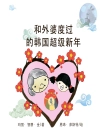In ‘The Children of the World, ‘ Paul Heyse employs a rich narrative style that intertwines lyrical prose with poignant character studies, illuminating the diverse experiences of childhood across various cultures. This work is set against the backdrop of the late 19th century, a time when European writers began exploring themes of identity, innocence, and the social dynamics that influence youthful lives. Heyse’s storytelling delicately balances realism with underlying philosophical questions about the nature of childhood and the impact of environment and circumstance on the young, making it a significant contribution to the literature of the period. Paul Heyse, a Nobel Prize-winning author and prominent figure of the German literary scene, drew inspiration from his own experiences and observations of youth and society. His deep understanding of human psychology and cultural diversity stems from his extensive travels and his background in literature and language. Heyse’s lived experiences, coupled with his academic pursuits, inform the nuanced characters and intricate narratives that populate this work, providing insights into the intricacies of growing up in a rapidly changing world. ‘The Children of the World’ is highly recommended for readers interested in a profound exploration of childhood and societal influences. Heyse’s ability to blend narrative artistry with thematic depth invites readers to reflect on their own experiences and perceptions of youth, making this work a timeless and relatable exploration of the human condition.
Over de auteur
Paul Johann Ludwig von Heyse (15 March 1830 – 2 April 1914) was a distinguished German writer and translator, a member of the two-century-old Tuesday Club of Berlin, and the recipient of the Nobel Prize in Literature in 1910 ‘as a tribute to the consummate artistry, permeated with idealism, which he has demonstrated during his long productive career as a lyric poet, dramatist, novelist and writer of world-renowned short stories.’ Best known for his work ‘The Children of the World’ (‘Die Kinder der Welt’, 1873), Heyse’s literary style is characterized by his elegant prose, mastery of form, and a keen sensitivity towards the psychological nuances of his characters. Spanning a prolific career, Heyse also penned the well-regarded novellas ‘L’Arrabbiata’ (1855) and ‘The Dead Lake’ (1851), which showcased his narrative deftness and cemented his reputation as a key figure in 19th-century literature. Heyse’s literary accomplishments and curated collection of folk-poetry ‘Italienisches Liederbuch’ further contributed to his standing in the literary community. His works typically engaged with themes of love, tragedy, and the complexities of human emotion, making him a beloved author of his time and a significant contributor to the Western literary canon.












